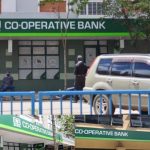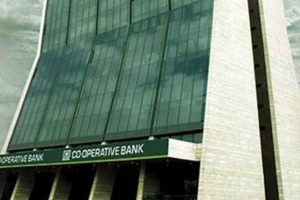
Prior to 1994, immigrants from elsewhere faced discrimination and even violence in South Africa. After majority rule in 1994, contrary to expectations, the incidence of xenophobia increased.
Between 2000 and March 2008, at least 67 people died in what were identified as xenophobic atracks.
In May 2008, a series of attacks left 62 people dead; although 21 of those killed were South African citizens. The attacks were motivated by xenophobia.
In 2015, another nationwide spike in xenophobic attacks against immigrants in general prompted a number of foreign governments to begin repatriating their citizens. A Pew Research poll conducted in 2018 showed that 62% of South Africans viewed immigrants as a burden on society by taking jobs and social benefits and that 61% of South Africans thought that immigrants were more responsible for crime than other groups.
Between 2010 and 2017 the immigrant community in South Africa increased from 2 million people to 4 million people.
Between 1984 and the end of hostilities in that country, an estimated 50,000 to 350,000 Mozambicans fled to South Africa. While never granted refugee status they were technically allowed to settle in the bantustans or black homelands created during the apartheid system.
The reality was more varied, with the homeland of Lebowa banning Mozambican settlers outright while Gazankulu welcomed the refugees with support in the form of land and equipment. Those in Gazankulu, however, found themselves confined to the homeland and liable for deportation should they officially enter South Africa, and evidence exists that their hosts denied them access to economic resources.
Unrest and civil war likewise saw large numbers of Congolese people emigrate to South Africa, many illegally, in 1993 and 1997. Subsequent studies found indications of xenophobic attitudes towards these refugees, typified by them being denied access to the primary healthcare to which they were technically entitled.
According to a 1998 Human Rights Watch report, immigrants from Malawi, Zimbabwe and Mozambique living in the Alexandra township were “physically assaulted over a period of several weeks in January 1995, as armed gangs identified suspected undocumented migrants and marched them to the police station in an attempt to ‘clean’ the township of foreigners.”
The campaign, known as “Buyelekhaya” (go back home), blamed foreigners for crime, unemployment and sexual attacks.
In September 1998, a Mozambican national and two Senegalese citizens were thrown out of a train. The assault was carried out by a group returning from a rally that blamed foreigners for unemployment, crime and the spread of AIDS.
In 2000, seven foreigners were killed on the Cape Flats over a five-week period in what police described as xenophobic murders possibly motivated by the fear that outsiders would claim property belonging to locals.
In October 2001, residents of the Zandspruit informal settlement gave Zimbabwean citizens ten days to leave the area. When the foreigners failed to leave voluntarily, they were forcefully evicted and their shacks were burned down and looted.
Community members said they were angry that Zimbabweans were employed whilst locals remained jobless and blamed the foreigners for a number of crimes. No injuries were reported amongst the affected Zimbabweans.
In the last week of 2005 and first week of 2006, at least four people, including two Zimbabweans, died in the Olievenhoutbosch settlement after foreigners were blamed for the death of a local man. Shacks belonging to foreigners were set alight and locals demanded that police remove all immigrants from the area.
In August 2006, Somali refugees appealed for protection after 21 Somali traders were killed in July of that year and 26 more in August.
The immigrants believed the murders to be motivated by xenophobia, although police rejected the assertion of a concerted campaign to drive Somali traders out of townships in the Western Cape.
Attacks on foreign nationals increased markedly in late-2007 and it is believed that there were at least a dozen attacks between January and May 2008.
The most severe incidents occurred on 8 January 2008 when two Somali shop owners were murdered in the Eastern Cape towns of Jeffreys Bay and East London, then in March 2008 when seven people were killed including Zimbabweans, Pakistanis and a Somali national after their shops and shacks were set alight in Atteridgeville near Pretoria.
In late May 2009, reports emerged regarding a possible resurgence of xenophobic related activity and the organising of attacks in the Western Cape.
Reports of threats and secret meetings by local businessmen surfaced in Gugulethu, Khayelitsha and Philippi, Cape Town.
Samora Machel in Philippi once again emerging as a flash-point. In Gugulethu, reports emerged of secret meetings by local businessmen discussing ‘what to do about Somali shopkeepers’. The Anti-Eviction Campaign brought these issues to the open by organising a series of anti-xenophobia meetings attempting to find the root cause of the crisis.
In November 2009, a community of 1500-2500 Zimbabwean farm workers was forcibly evicted from their homes in the informal settlements of De Doorns, a grape-farming town in the Western Cape. No persons were physically assaulted but homes were trashed and looted and this led to the biggest displacement of foreign nationals since May 2008.
The Zimbabweans were then housed in a displaced persons’ camp where some remained for a year until it was closed. Researchers identified the role of a ward councillor, Mpumelelo Lubisi, in inciting the attack in possible collusion with informal labour brokers who had financial interests in getting rid of their Zimbabwean competitors. South African workers also accused farmers of employing the Zimbabweans at less than minimum wage (farmers and Zimbabwean workers denied this).
In 2010 the press carried numerous articles claiming that there would be massive planned xenophobic violence at the end of the 2010 Football World Cup. However this did not happen.
In July 2012 there were new attacks in parts of Cape Town and in Botshabelo in the Free State. On 30 May 2013, 25-year-old Abdi Nasir Mahmoud Good, was stoned to death. The violence was captured on a mobile phone and shared on the Internet.
Three Somali shopkeepers had been killed in June 2013 and the Somali government requested the South African authorities to do more to protect their nationals.
Among those murdered were two brothers who were allegedly hacked to death. The attacks led to public outcry and worldwide protests by the Somali diaspora, in Cape Town, London and Minneapolis.
South African Foreign Minister Maite Nkoana-Mashabane expressed the government’s “strongest condemnation” of the violence which has recently seen looting and the death of a Somali shopkeeper.
Somali Prime Minister Abdi Farah Shirdon has expressed concern for the safety of Somalis in South Africa, calling on the government there to intervene to stop violence against Somali people after deadly attacks in Pretoria and Port Elizabeth.
On 7 June 2014, a Somali national, in his 50s, was reportedly stoned to death and two others were seriously injured when the angry mob of locals attacked their shop in extension 6 late on Saturday. Three more Somalis were wounded from gunshots and shops were looted.
After another round of xenophobic violence against Somali entrepreneurs in April 2015, Somalia’s government announced that it would evacuate its citizens from South Africa.
In April 2015, there was an upsurge in xenophobic attacks throughout the country. The attacks started in Durban and spread to Johannesburg. Zulu King Goodwill Zwelithini has been accused of fuelling the attacks by saying that foreigners should “go back to their countries”.
Locals looted foreigners’ shops and attacked immigrants in general, forcing hundreds to relocate to police stations across the country.
The Malawian authorities subsequently began repatriating their nationals, and a number of other foreign governments also announced that they would evacuate their citizens. More than 300 people were arrested.
On 18 April 2015 a photographer from the Sunday Times, James Oatway, photographed a brutal attack on a Mozambican man. The man, Emmanuel Sithole, died from his wounds. Four suspects were arrested within days of the publication of photographs in the edition of 19 April of The Sunday Times of the murder of Mozambican street vendor Emmanuel Sithole in Alexandra township the previous day. Sithole’s name is not included in the official list of seven victims killed in the April 2015 attacks, including an Ethiopian, a Mozambican, a Bangladeshi, a Zimbabwean and three South Africans who were all killed in KwaZulu-Natal.
Despite the government’s insistence that Sithole’s murder was not xenophobic, the South African National Defence Force (SANDF) was deployed in Alexandra township following the publication of the images.
On 23 April several thousand demonstrators marched through central Johannesburg to protest against a spate of deadly attacks on immigrants. They sang songs denouncing xenophobia and carried banners that read “We are all Africans” as migrant workers crowded balconies, shouting their support.
In October 2015 there were sustained xenophobic attacks in Grahamstown in the Eastern Cape.
It as reported than more than 500 people were displaced and more than 300 shops and homes looted and, in some cases, destroyed altogether. In these attacks Muslims were specifically targeted.
The Grahamstown xenophobic attacks that took place on 21 October 2015, and coincided with the FeesMustFall protest at Rhodes University, lasted for several days.
The attacks were instigated by the taxi drivers’ protests, where the drivers’ were protesting over the terrible state of roads, the rise in crime and rumours of murders committed by foreigners.
Their demands were that the mayor ought to do something about their grievances. Their grievances were not addressed by the mayor.
On 21 October 2015 taxi drivers attacked spaza shops owned by Pakistani, Somali, Bangladeshi and Ethiopian residents of Grahamstown. There was a mobilisation of people by the taxi drivers, with the aim of attacking and looting shops owned by foreigners. There was a rumour that insinuated that foreigners were responsible for the rampant murders in town: that an “Arab man had killed and mutilated women” around town and that the police had not done anything to address these rumours.
Grahamstown residents in the townships were angry at the police for not doing anything to dispel the rumours, despite having been warned by the councillors that the residents might end up taking the law into their own hands. Thus, it was these rumours that incited the attacks on foreigners.
On 23 October, the Makana Municipality held a town meeting at City Hall. The meeting was focused on how the municipality and the South African police would pacify the residents and address the situation. During that meeting, there was no representative from the police and one of the ward councillors further legitimized the attacks through xenophobic sentiments centred on not giving foreigners a platform to have their own shops.
The attacks continued, with taxi drivers transporting looters for free, according to the residents of Grahamstown.
Reports from the residents allege that the police’s attitudes were that of indifference, with some participating in the looting.
The policing of the attacks was elitist as there was a line on Beaufort street which pointed out where looting would be tolerated and where it would not be. Thus, looting was allowed in the township and not tolerated in town.
The police only pacified the situation and restored order after a week of attacks and looting. The xenophobic attacks in Grahamstown differed from the usual xenophobic attacks in South Africa as the ones in Grahamstown were mostly targeted at Muslims. The main reason why Muslims were targeted was mainly due to the rumour that an Arab man was responsible for the murder of women in the town.
From 20–23 June 2016 a wave of riots hit the City of Tshwane. Although the riots were sparked by political discontent within the ANC Somali, Pakistani and other foreign owned shops and micro enterprises were targeted for looting and a number of foreigners were attacked.
On Friday 24 February 2017 a large scale and officially sanctioned anti-immigrant protest was organised and held in the Pretoria.
Protesters marched to the Foreign Ministry and handed a petition to government representatives. Protesters accused immigrants of taking jobs from South Africans, causing crime, and complained that “they are arrogant and they don’t know how to talk to people, especially Nigerians.”136 protesters were arrested during the march.
On the 25 March 2019 xenophobic riots targeting African immigrants broke out in Sydenham, Jadhu Place and Overport areas of Durban.
Around one hundred people attacked businesses owned by foreign nationals resulting in around 50 people seeking shelter in a local police station and mosque. Three people were killed in the riot.
A speech given by President Cyril Ramaphosa at the ANC’s election manifesto for the 2019 South African general election was blamed for contributing to xenophobic feeling wherein Ramaphosa committed to cracking down on undocumented foreigners involved in criminal activities.
The attacks on foreigners was criticised by both the South African government and political parties amidst calls to ensure that xenophobic sentiment was not exploited for electoral purposes.
On 1 September 2019 riots and looting targeting shops owned by foreign nationals broke out in Jeppestown and Johannesburg CBD. By the end of 2 September around 81 people had reportedly been arrested by police for looting.
Around 50 businesses predominantly owned by Africans(most of which were mainly Nigerians) from the rest of the continent were reportedly destroyed or damaged during the incident.
Source : Wikipedia



















